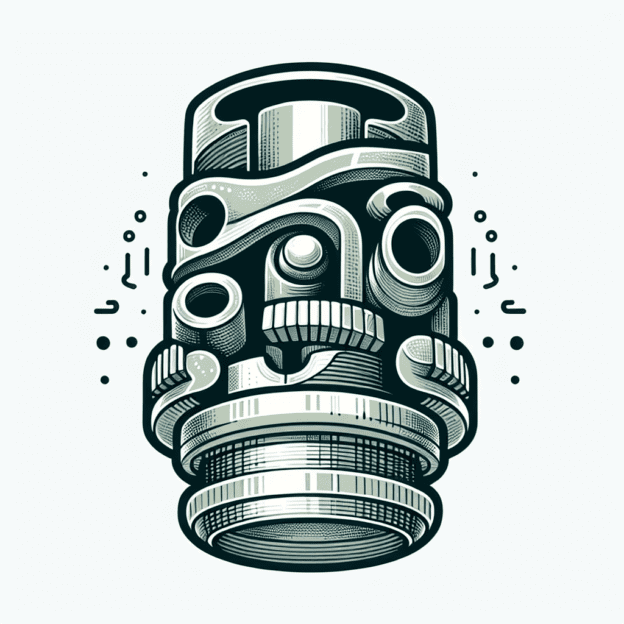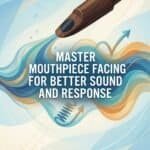Mastering the Clarinet Mouthpiece: Your Ultimate Guide
The clarinet mouthpiece is a small but mighty part of your instrument. It can change your sound and playing experience in big ways! Let's dive into what makes a clarinet mouthpiece special, how it shapes your sound, and tips for picking the perfect one for you.
Anatomy of a Clarinet Mouthpiece
A clarinet mouthpiece has several key parts, each playing a role in your sound and playability:
- Tip Opening: The gap between the reed and the mouthpiece tip. Bigger openings give more volume and flexibility, while smaller ones offer better control.
- Facing Curve: Where the reed meets the mouthpiece. Its shape and length affect how the reed vibrates, impacting response and tone.
- Baffle: The inside surface of the mouthpiece. Its shape can make your sound brighter or darker.
- Chamber: The hollow space inside. Different sizes and shapes can change your tone from mellow to bright.
| Mouthpiece Part | Function | Impact on Sound |
|---|---|---|
| Tip Opening | Controls reed vibration | Affects volume and flexibility |
| Facing Curve | Guides reed movement | Influences response and tone |
| Baffle | Shapes air flow | Brightens or darkens tone |
| Chamber | Resonates sound | Affects overall tone quality |
Choosing the Right Mouthpiece
Picking the right mouthpiece is a personal journey. Your playing style, music type, and even your physical features matter. Here are some things to think about:
- Material: Hard rubber (ebonite) is loved by classical players for its warm sound. Plastic is durable and budget-friendly, great for beginners. Metal is popular in jazz for its bright, powerful tone.
- Tip Opening: Beginners might like smaller openings for easier play, while advanced players often go for larger ones for more expression.
- Facing Length: Longer facing lengths offer more flexibility and dynamic range, perfect for nuanced playing.
Impact on Sound and Playability
The mouthpiece is where the magic starts. It sets the reed vibrating, which gets the air column inside the clarinet moving. This makes the mouthpiece crucial for shaping your sound:
- Tone Quality: The material and design can make your sound bright or dark, focused or spread.
- Intonation: A well-made mouthpiece helps keep your pitch consistent across the clarinet's range.
- Response: How easily the reed vibrates affects how responsive your clarinet is, making quick notes and smooth passages easier.
Experimenting with Reeds
Your mouthpiece and reed work together to create sound. Trying different reeds can help you find the perfect match. Consider these factors:
- Reed Strength: Softer reeds (lower numbers) are easier to play and sound brighter. Harder reeds (higher numbers) offer more resistance and a darker tone.
- Reed Material: Cane reeds are loved for their natural feel and sound, but synthetic reeds are consistent and durable.
Reed Strength Guide
- 1 – 1.5: Very soft, suitable for beginners
- 2 – 2.5: Medium-soft, good for intermediate players
- 3 – 3.5: Medium, popular among advanced players
- 4 – 5: Hard, for professional players with strong embouchures
Practical Advice for Clarinetists
Finding the right mouthpiece takes some trial and error. Here are some tips to help you out:
- Seek Professional Advice: If you're unsure, ask your clarinet teacher or a pro. They can give you valuable insights.
- Try Before You Buy: Whenever possible, test different mouthpieces to see which one feels and sounds best. Many music stores offer trial periods or rentals.
- Be Patient: Finding the perfect mouthpiece takes time. Keep experimenting until you find the one that enhances your playing the most.
Martin Freres Clarinets: A Legacy of Craftsmanship
While this post is all about helping you, it's worth mentioning the craftsmanship behind Martin Freres Clarinets. Their mouthpieces reflect a deep understanding of what clarinetists need.
Tips for Maintaining Your Mouthpiece
Taking care of your mouthpiece can make it last longer and perform better:
- Regular Cleaning: Clean your mouthpiece after each use to remove moisture and residue. Use a mouthpiece brush and warm water, avoiding harsh chemicals.
- Proper Storage: Store your mouthpiece in a protective case to prevent scratches and damage. Keep it away from extreme temperatures.
- Check for Wear: Over time, the facing and tip opening can wear down. Regularly inspect your mouthpiece and replace it if you notice significant wear or damage.
The Journey to the Perfect Sound
Finding the ideal clarinet mouthpiece is an ongoing adventure. Each player has unique preferences, and the right mouthpiece can significantly enhance your musical expression. Embrace the chance to experiment with different materials, designs, and reeds to discover what suits you best.
In the world of clarinets, the mouthpiece is more than just a piece of hardware—it's a gateway to your instrument's true potential. By understanding its intricacies and investing in quality craftsmanship, you can unlock new dimensions of sound and elevate your playing experience.







